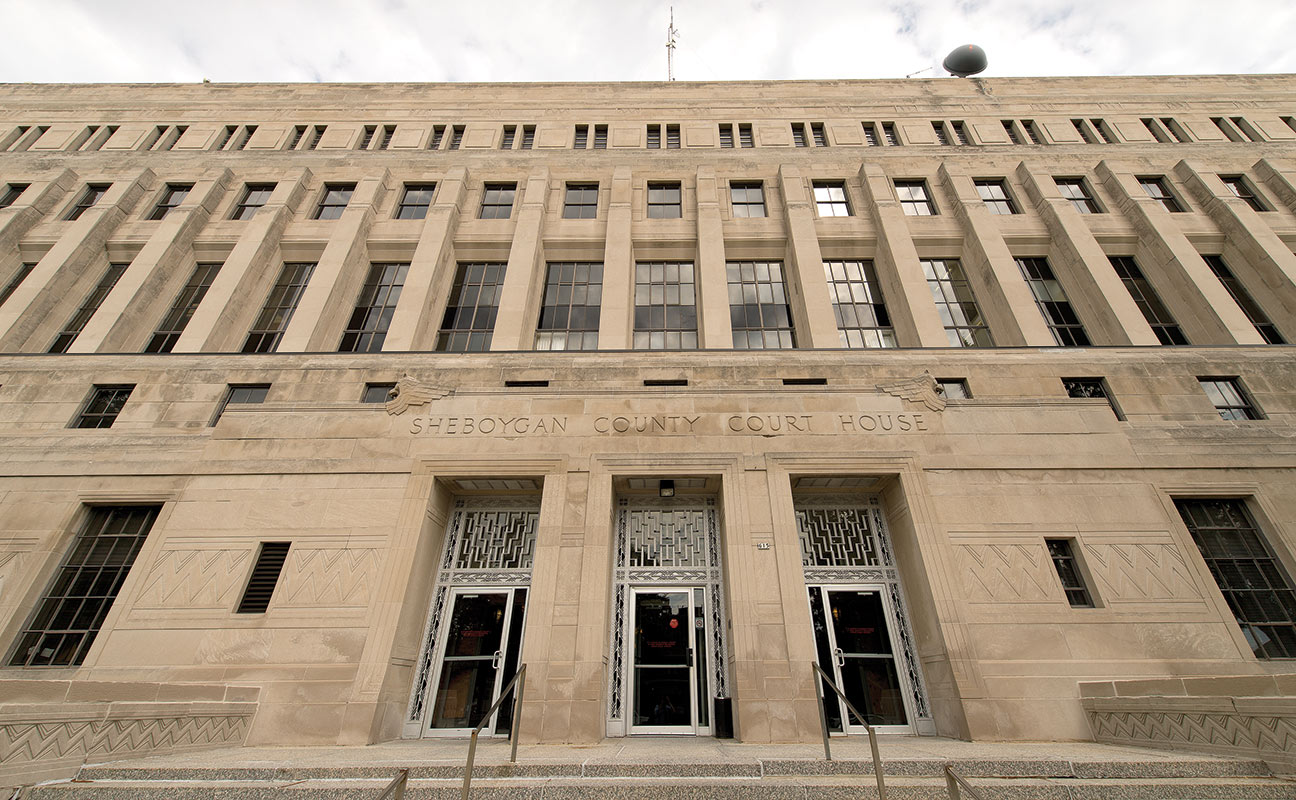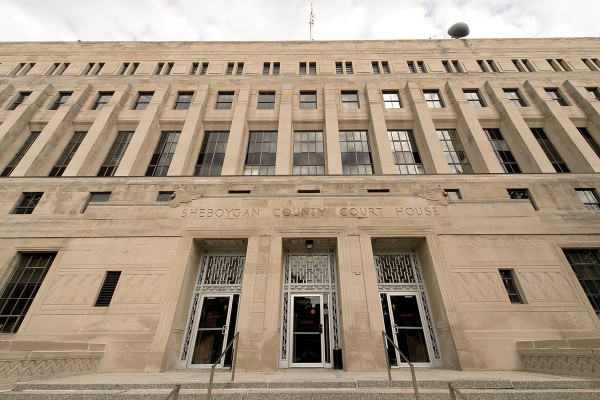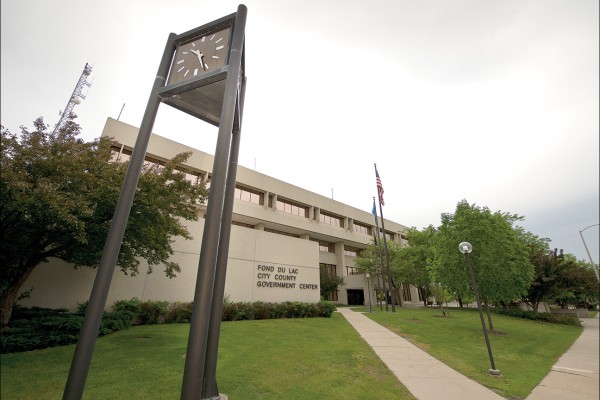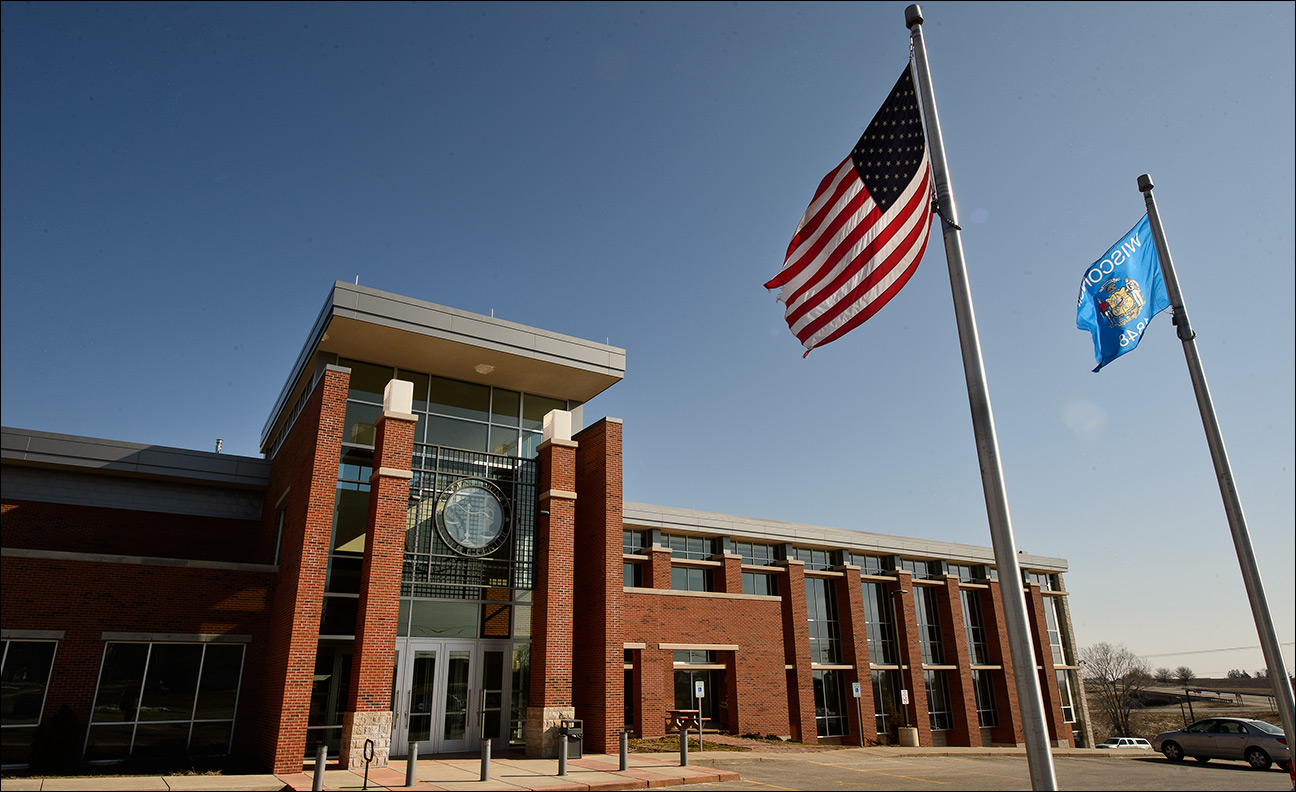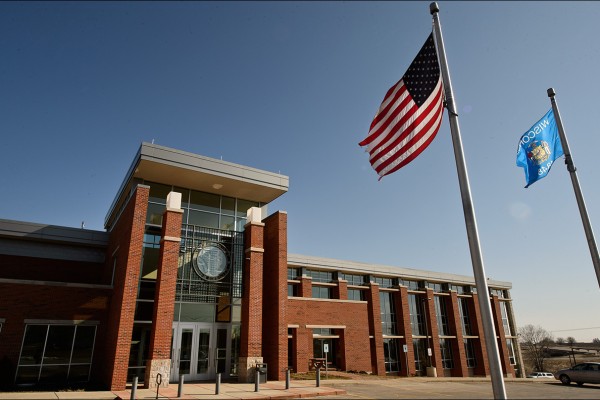Winnebago County offers history in close quarters
By: Jack Zemlicka, [email protected]//October 24, 2011//
Winnebago County offers history in close quarters
By: Jack Zemlicka, [email protected]//October 24, 2011//

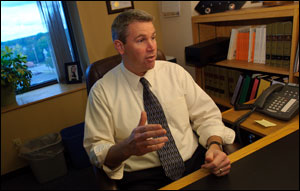
The historic Winnebago County Courthouse is both an honor and an aggravation for those who work there.
Built in 1937, the five-story stone courthouse features a rose marble interior, ornate wood paneling in the three original courtrooms and even a bust of former President Ronald Reagan commemorating a 1985 visit. The building at 415 Jackson St., Oshkosh, was added to the National Register of Historic Places in 1982.
But with that designation come rules. The county, for instance, cannot remodel or expand the courthouse, putting a premium on existing space.
As local criminal defense attorney William Lennon put it, “with the beauty and the majesty comes a trade-off in terms of practical usage.”
Branch 2 Judge Scott Woldt’s third-floor courtroom doubles as the Winnebago County Board of Supervisors boardroom, complete with individual seats and nameplates in the public gallery.
Judge Dan Bissett’s Branch 6 courtroom, established in 1991, is across the street from the courthouse in the City of Oshkosh Public Safety Building, posing what he said can be a frigid inconvenience for confused litigants in winter.
The family court commissioner’s hearing room is a converted hallway with only one exit in the back of the room, a potential safety concern if a litigant takes issue with a ruling.
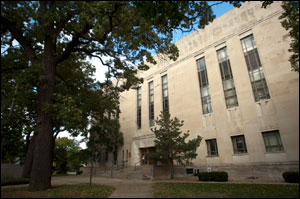
“I think when it was put on the registry, the thought was, ‘Let’s honor this beautiful building,’” Clerk of Courts Diane Fremgen said, adding that at the time of the designation, the court had plenty of space to accommodate staff members, litigants and attorneys.
“But I don’t think they thought of the ramifications in that we can’t change anything.”
There is charm in an information kiosk and three walk-in phone booths on the ground floor, but also a lost opportunity to convert the space into conference rooms or jury quarters.
“I tell lawyers coming in that they should expect to be a little bit more informal here,” Lennon said. “You aren’t going to have private meeting rooms to talk to clients.”
He said he often grabs a corner of the courthouse to converse with a client and tries to stay away from prying ears.
With space at such a premium, there are a lot of eyes on the empty portion of the fifth floor once occupied by the county jail. Fremgen said it should be used to make room for a seventh judge whenever that judge arrives.
A 2007 judicial audit conducted by the National Center for State Courts showed Winnebago County should be operating with nine judges.
“If the state is ever going to start appointing judges (for new branches), we’re at the top of the list,” Fremgen said. “But if we don’t have the space allocated, they are going to pass us by.”
 She said there have been on-again, off-again talks of building a new justice center since she started working for the court in 1991, but a lack of money has always killed those plans.
She said there have been on-again, off-again talks of building a new justice center since she started working for the court in 1991, but a lack of money has always killed those plans.
But the space problems don’t prevent judges from resolving cases. Winnebago County closes 91 percent of its criminal cases — 85 percent of felony and 97 percent of misdemeanor cases — during each six month intake cycle.
Case clearance numbers like that have placed the court in the top third of all counties, according to 2010 Office of Court Operations statistics.
Each month, a different Winnebago County judge is responsible for case intake, which generally means 350 to 400 cases, and then has the following five months to clear as many cases as possible.
“It’s a good system because it encourages us to make sure we keep these cases moving,” said Branch 5 Judge John Jorgensen, who started his intake cycle Oct. 1. “It’s also fair to the parties and defendants because they deserve not to have these cases hanging out there.”
As a former district attorney and now a private practitioner, Lennon has worked both sides of the system. He said the court is as efficient as it can be, given the tight quarters.
Lennon’s firm, Goldin & Lennon LLC, is two blocks away from the courthouse in one of many old Victorian homes near the building.
Given the history and proximity of the courthouse, Lennon said, he is willing to sacrifice some of the modern amenities other courts offer.
“I don’t want to sound like a griper,” he said. “I don’t think we would trade our courthouse for the most modern one imaginable.
“But there are challenges.”
Legal News
- Former law enforcement praise state’s response brief in Steven Avery case
- Eric Toney announces re-election bid for Fond du Lac County District Attorney
- Former Wisconsin Democratic Rep. Peter Barca announces new bid for Congress
- Republicans file lawsuit challenging Evers’s partial vetoes to literacy bill
- More human remains believed those of missing woman wash up on Milwaukee Co. beach
- Vice President Harris returning to Wisconsin for third visit this year
- Wisconsin joins Feds, dozens of states to hold airlines accountable for bad behavior
- Trump ahead of Biden in new Marquette poll
- Bankruptcy court approves Milwaukee Marriott Downtown ‘business as usual’ motion
- New Crime Gun Intelligence Center to launch in Chicago
- Arrest warrant proposed for Minocqua Brewing owner who filed Lawsuit against Town of Minocqua
- Wisconsin Supreme Court justices question how much power Legislature should have
WLJ People
- Power 30 Personal Injury Attorneys – Russell Nicolet
- Power 30 Personal Injury Attorneys – Benjamin Nicolet
- Power 30 Personal Injury Attorneys – Dustin T. Woehl
- Power 30 Personal Injury Attorneys – Katherine Metzger
- Power 30 Personal Injury Attorneys – Joseph Ryan
- Power 30 Personal Injury Attorneys – James M. Ryan
- Power 30 Personal Injury Attorneys – Dana Wachs
- Power 30 Personal Injury Attorneys – Mark L. Thomsen
- Power 30 Personal Injury Attorneys – Matthew Lein
- Power 30 Personal Injury Attorneys – Jeffrey A. Pitman
- Power 30 Personal Injury Attorneys – William Pemberton
- Power 30 Personal Injury Attorneys – Howard S. Sicula







